Event-plane resolution of the EPD and BBC using 2018 isobar run data
This study investigates the difference between second-order event-plane resolutions on a centrality-dependent basis for flattened BBC and EPD event plane distributions. It is found that the EPD has a resolution over three
https://drupal.star.bnl.gov/STAR/blog/adams92/classified-information-blog-post-event-plane-resolution-epd-and-bbc-using-2018-isobar-r
For the EPD, no pedestal subtraction, noise suppression, or gain correction is necessary when using nMip as the weight in the standard Q-vector method:

![]()
The event plane distributions at this point are never flat, and the first step in flattening the event plane distributions is with the "recentering" method for each centrality bin. Here, one calculates the event plane as above, except by subtracting from the Q vectors the average value of Q vectors over many events. For very non-central collisions, sometimes there are no hits in one of the EPD wheels, which leads to a default Q-vector value of 0. This can be seen as a spike in the Q-vector distribution:
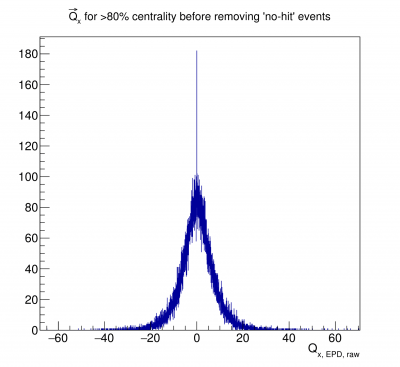
This leads to an auto-correlation, and is easily dealt with by requiring at least one hit in each wheel:
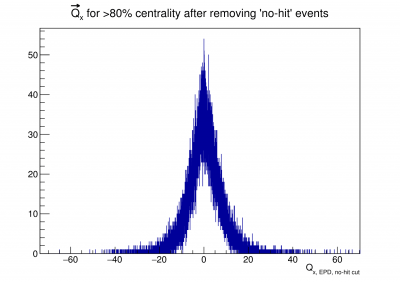
The recentered event plane distributions are still not flat at this point, so one must calculate the Fourier coefficients necessary to force a flat distribution.

This is done separately for each centrality bin and wheel, but shown below is the second-order event-plane distribution for all bins and both wheels for each of the three stages:
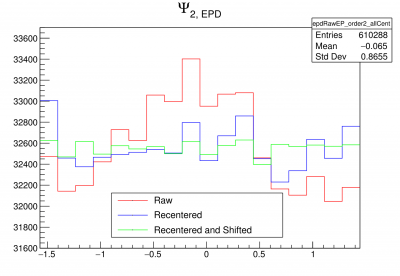
East-West correlations are also obvious here:

The event plane resolution, estimated by sqrt(2) times the sub-event-plane resolution
![]() ,
,
is mostly unaffected by flattening for the EPD, since the event planes are quite flat to begin with.
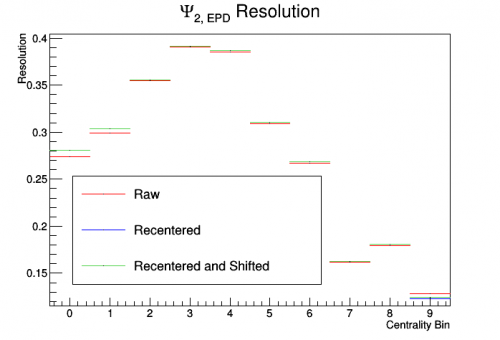
The process of event-plane flattening is the same for the BBC, except that the ADC distributions need to be noise suppressed and the tiles need to be gain corrected. There is a cut from the PicoDsts on ADC < 3. For some channels, this is enough to suppress the noise; a channel for which this is not enough is shown here:
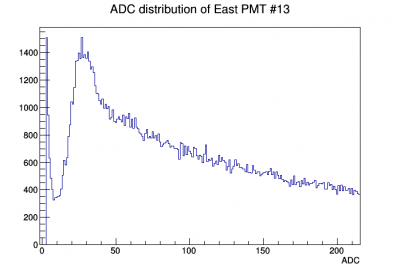
For each channel, I found the minimum between the "noise peak" and the MIP peak and cut on ADCs less than that minimum.
Additionally, there are two sets of paired tiles on each BBC wheel, and the ADC values should be randomly assigned to one of the tiles. Below are the second-order event-plane distributions through the various stages of flattening.
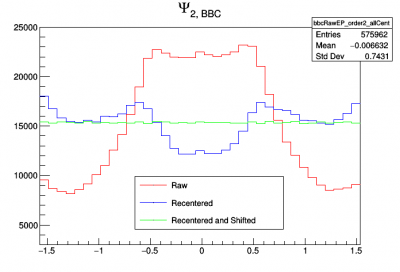
Here, the flattened event planes are not obviously correlated between the East and the West:
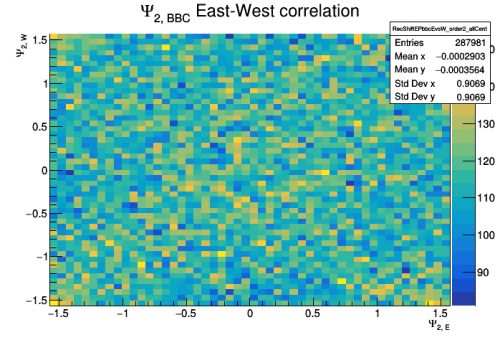
The second-order event-plane resolutions are significantly worse for the BBC:

The conclusion to draw here is that the EPD is providing a significantly larger second-order event-plane resolution than the BBC in the isobar run.
________________________________________________________________________________________________________________________________________________________________________
- adams92's blog
- Login or register to post comments
